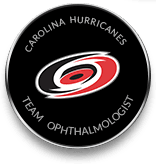LASEK / PRK / SBK in Raleigh, Durham & Cary
Popular LASIK Alternatives in North Carolina
Are you a Raleigh patient who’s you been told that Lasik is not right for you? Some patients aren’t well suited for LASIK eye surgery. This may be because of a pre-existing eye condition such as dry eye (keratitis sicca) or because the cornea is too thin or structurally unsound for LASIK. Dr. Dean Dornic is trained and experienced in a range of alternatives to LASIK such as LASEK or PRK, which can still provide patients with the same high quality of vision correction with improved safety.
What is LASEK?
Laser Assisted Sub Epithelial Keratotomy (LASEK) is a new twist on an older technique. LASEK offers our Raleigh / Durham patients who may not be good candidates for LASIK an alternative by combining the advantages of LASIK with photorefractive keratectomy (PRK).
When LASEK is performed, a very thin corneal flap is created by applying a dilute alcohol solution to the corneal epithelium. The flap, made up of weakened cells, is then lifted up and a laser is applied to the underlying corneal surface to reshape it. The epithelial flap is then replaced. Typically, a bandage contact lens is placed over the epithelial flap to hold it into position. The contact lens is usually removed three to five days later.
The epithelial flap created in LASEK maintains some of the advantage of a LASIK flap, i.e., improved comfort and reduced risk of haze. The speed of vision recovery is similar to that of PRK, but not as quick as LASIK.
Who is a candidate for LASEK?
Raleigh / Durham patients for whom making a LASIK flap may carry unacceptable risks are the most likely candidates. Examples include patients with thin corneas or patients whose ocular anatomy may not be conducive to flap creation (warped, very steep or very flat corneas).
Dr. Dornic is the first surgeon to perform the LASEK procedure in the Raleigh / Durham area. It has allowed for the successful, safer correction of vision in many patients who were previously considered poor laser vision correction candidates.
If you have been told that you are not a good candidate for other procedures, why not ask about LASEK? Contact our laser vision correction center in Cary for the latest information.
What is PRK?
PRK, first performed in the mid-1980s, uses the computer-controlled excimer laser to gently reshape the surface of the cornea without the creation of a corneal flap. We recommend PRK for our patients in Raleigh, Durham, and Cary, NC who have low to moderate levels of nearsightedness, farsightedness and/or astigmatism, and for whom creation of a corneal flap is not practical, especially those with a very thin cornea or abnormal epithelium (the protective outer layer of the cornea).
The first step of PRK is to use the laser to remove the epithelium. In the next step, the laser is directed on the middle layer of the cornea, called the stroma, to gently remove enough tissue to change its shape. The excimer laser removes tissue by breaking down the molecular bonds. This process allows the procedure to be quick and clean. For most patients, only 5 to 10 percent of the corneal tissue is removed to obtain the desired results.
Because the epithelium is removed, recovery from PRK takes longer than recovery from LASIK. Our Raleigh/Durham patients are fitted with a bandage contact lens, which is worn for a few days while the tissue grows back. Dr. Dornic will prescribe eye drops to assist with comfort and reduce the risk of infection. Follow-up appointments will be scheduled to monitor progress.
To learn more about PRK contact our laser vision correction center in Cary today.
What is SBK?
Dr. Dornic and Laser Eye Center of Carolina are pleased to offer “sub-Bowman’s keratomileusis,” or “SBK,” a premiere form of laser vision correction that is quick and painless. SBK combines the safety of PRK with the quick recovery time of LASIK surgery and reduces the downsides associated with these procedures.
The term “sub-Bowman’s” is used to describe the procedure because the depth of the flap is just thick enough to include Bowman’s membrane — the thin, non-cellular layer of the cornea that separates the outer epithelium from the underlying corneal tissue that is reshaped by an excimer laser in laser vision correction procedures like LASIK, PRK and (now) SBK.
The SBK procedure actually makes use of two different lasers. A femtosecond laser is used to create a thinner corneal flap than a typical LASIK flap. Vision correction is then performed with an excimer laser. Dr. Dornic uses the safest, most popular femtosecond laser, Intralase, to create SBK flaps that are approximately 100 microns thick, whereas LASIK flaps are usually 140 to 160 microns thick. By making the corneal flap thinner, Dr. Dornic is able to provide a comfortable procedure with fast visual recovery (like LASIK) and also decrease the risk of dry eye and ectasia associated with PRK.
Because the SBK procedure is less invasive, the cornea is left stronger and more structurally sound. After SBK surgery, patients have reported fewer cases of dry eye (a side effect most associated with LASIK). In addition, their eyes are less sensitive to light, and the chances for ectasia and other serious complications are considerably diminished. Recovery time from SBK is comparable to that of LASIK surgery and most patients are able to drive the following day.







